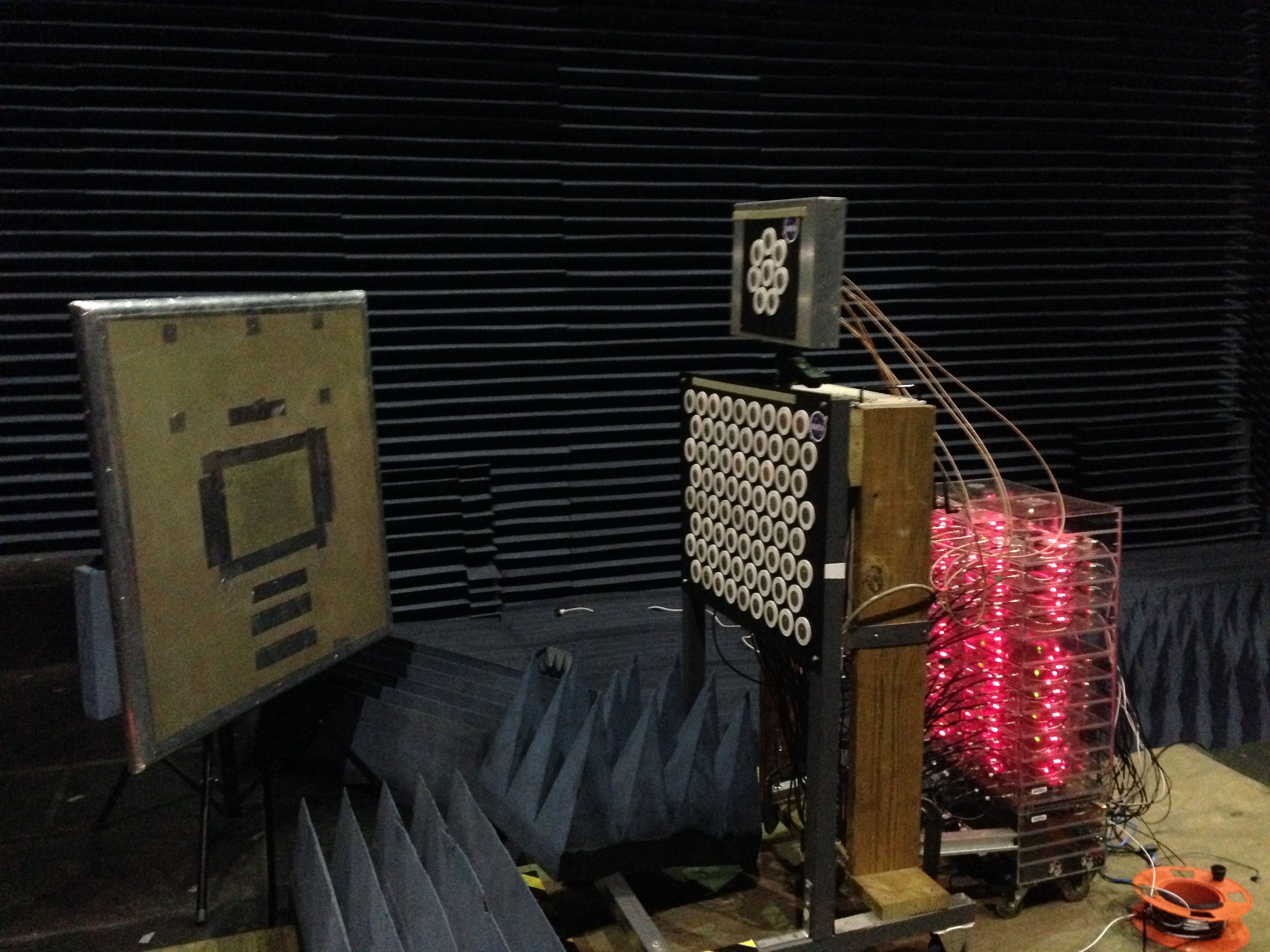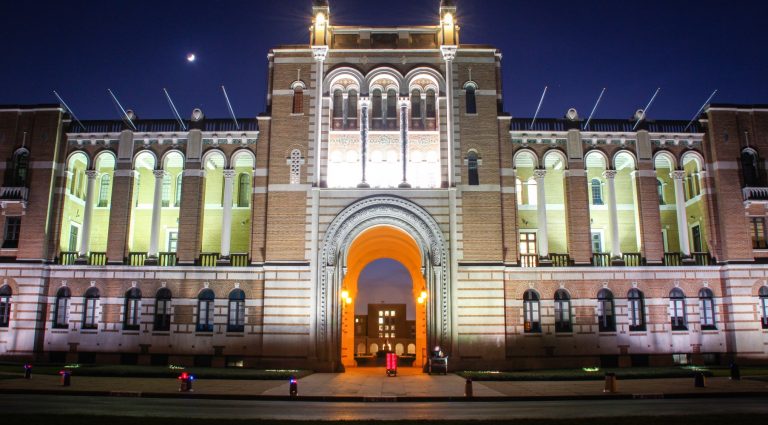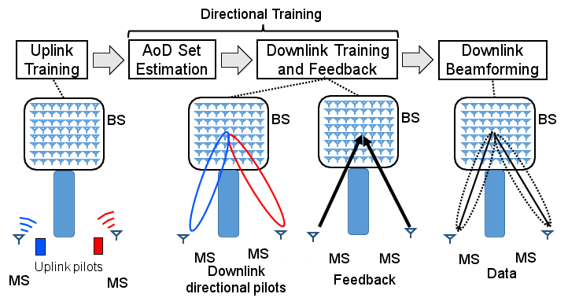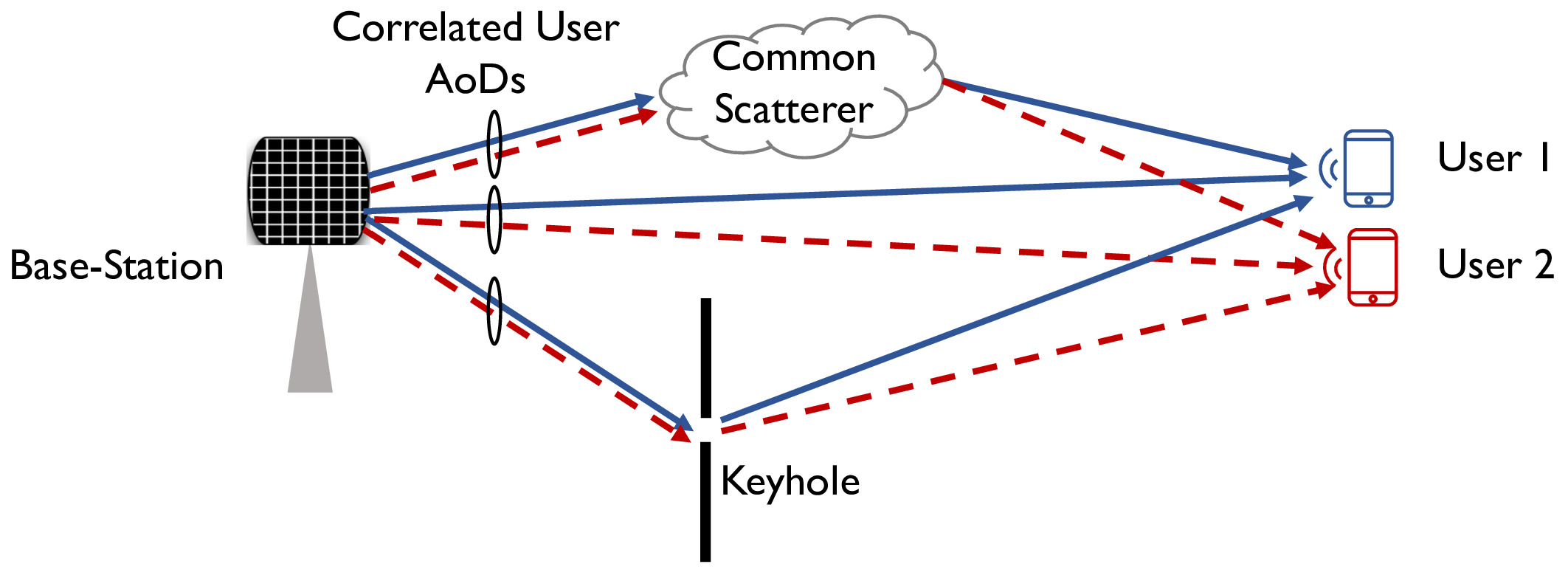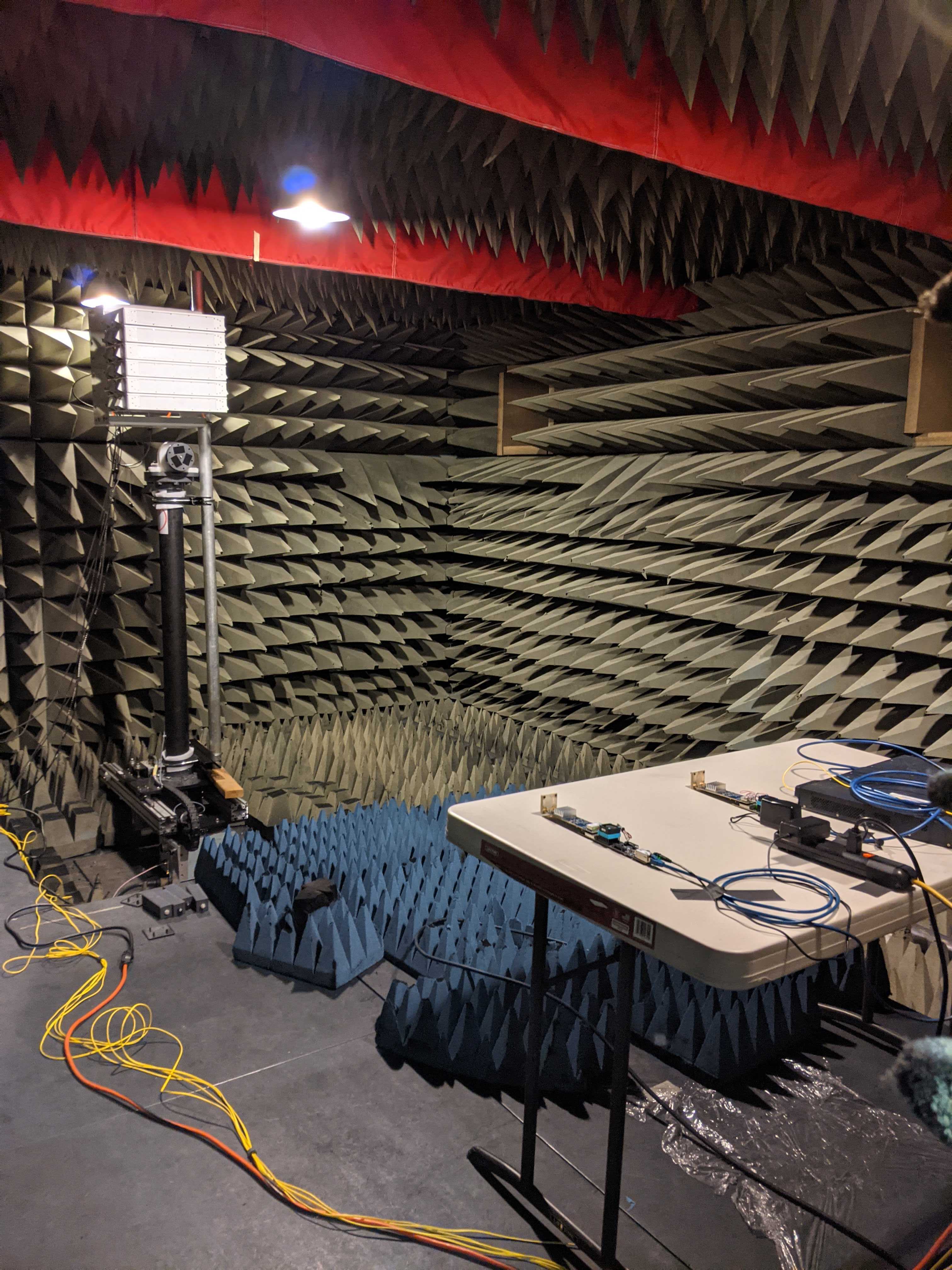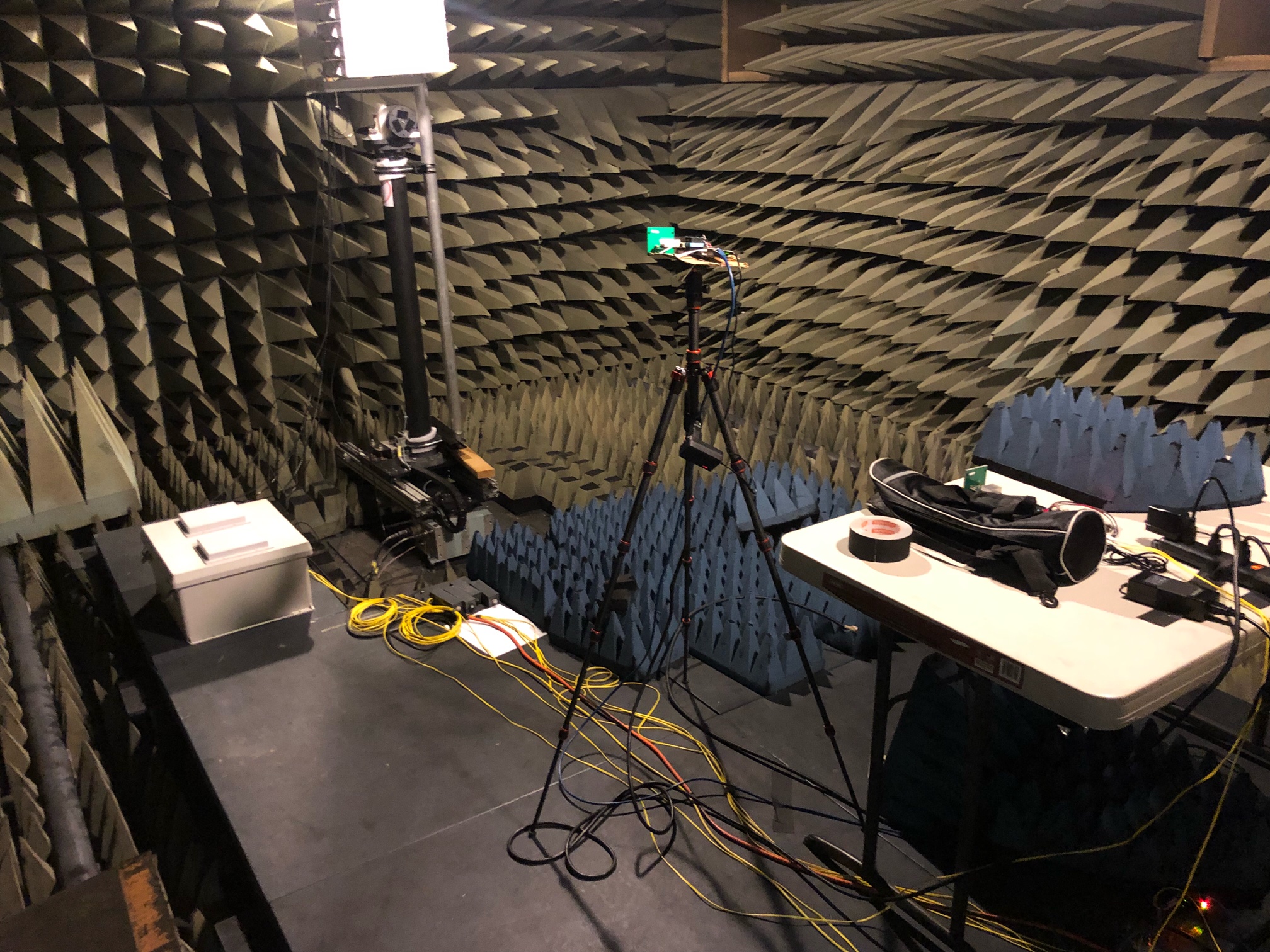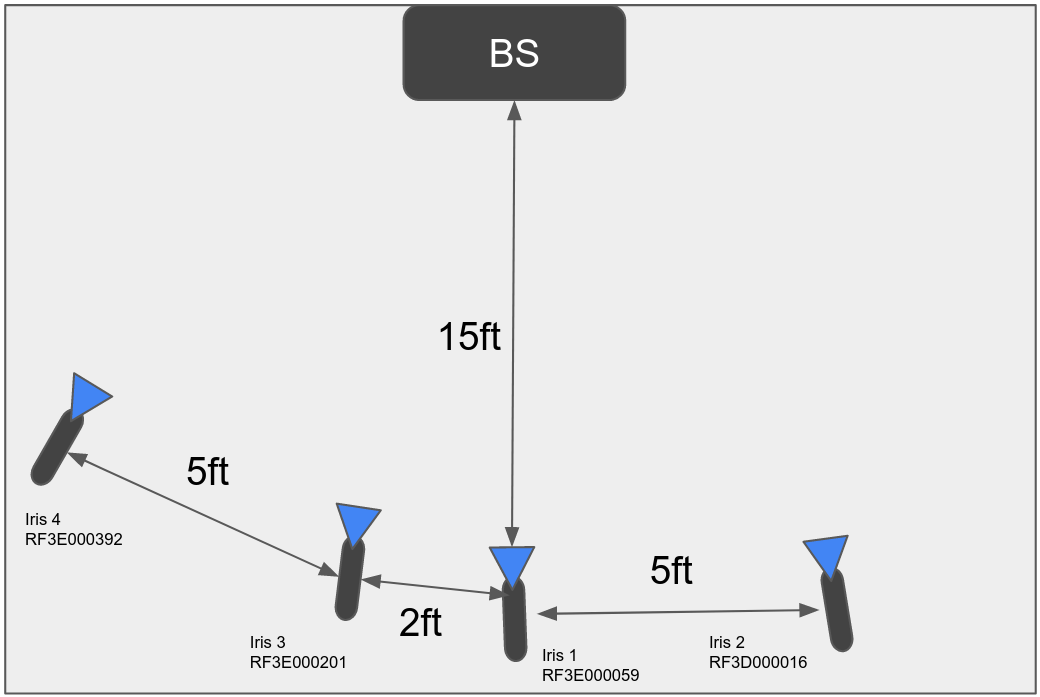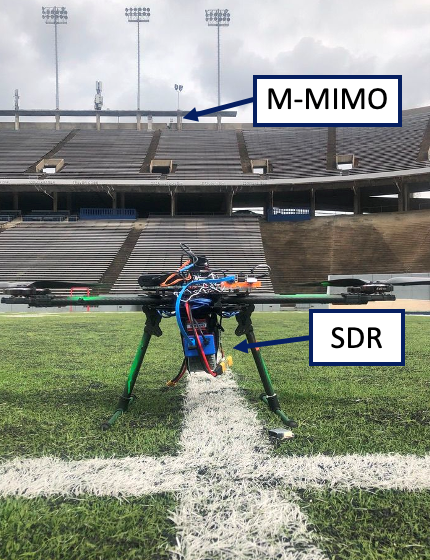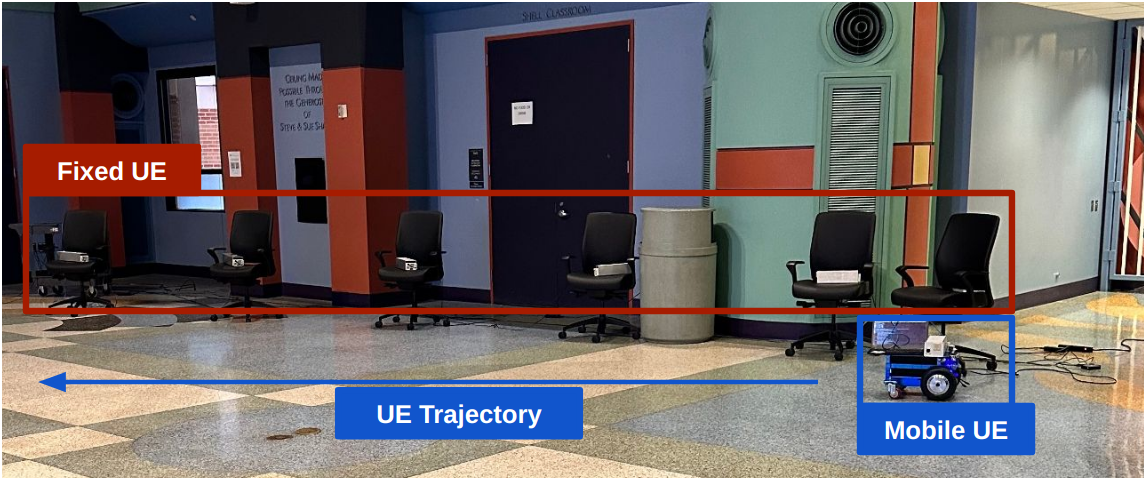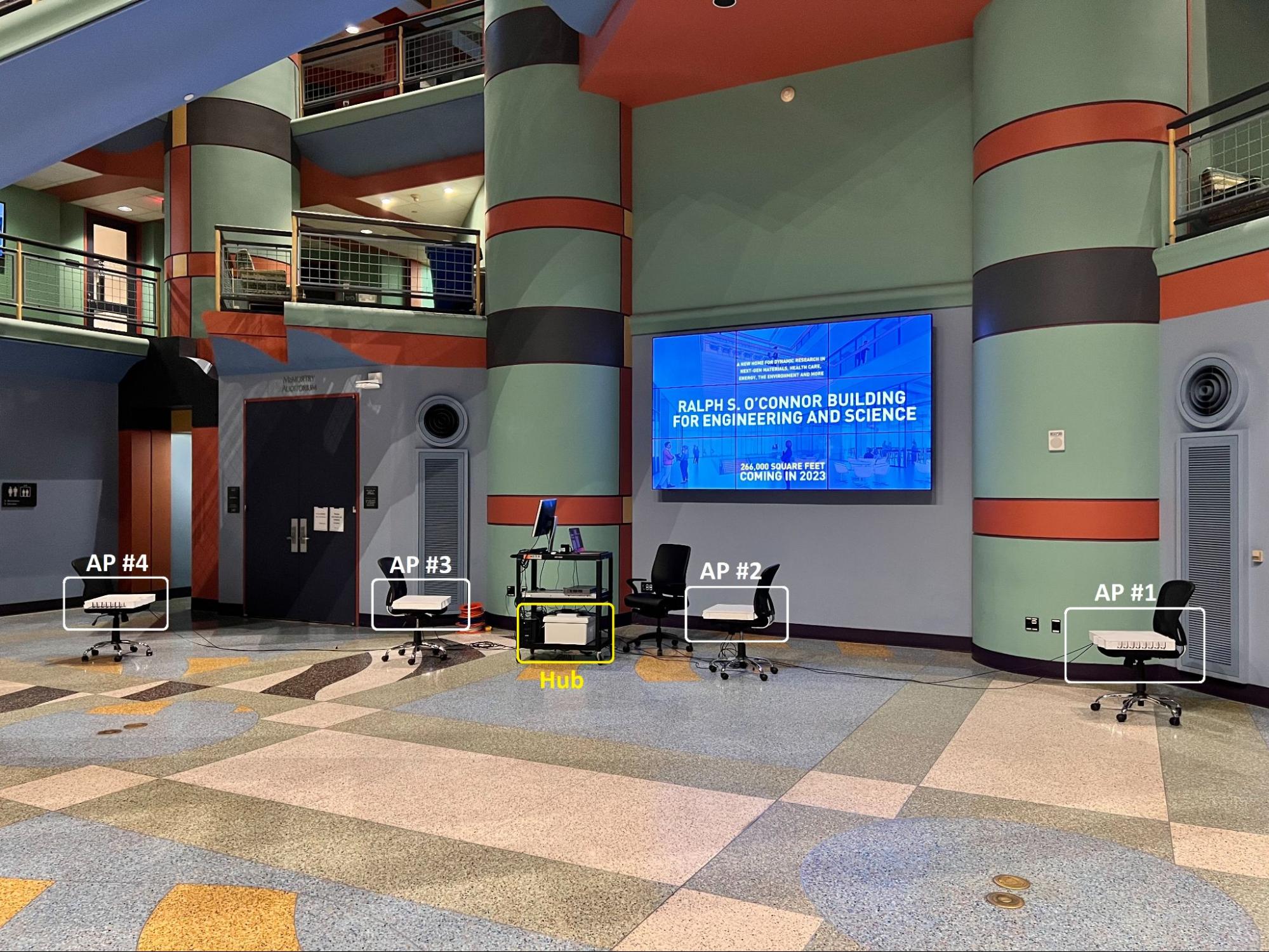Dataset Projects
SoftNull
SoftNull is a transmission beamforming based self-interference reduction technique for massive MIMO systems. It eliminates the need for analog cancellers and hence uses many antennas to enable a new functionality in “software,” i.e., current half-duplex radio based architecture can be used to achieve full-duplex behavior.
View ProjectArgos Channel Survey
In this project, we conducted a comprehensive many-antenna MU-MIMO channel measurement campaign. The measurement system used supports full mobility with very high time-frequency resolution. We report channel traces in the UHF, 2.4 GHz, and 5 GHz bands, in diverse environments, with up to 96 base-station antennas serving 8 users.
View ProjectFDD Massive MIMO
A key challenge for frequency-division duplexing (FDD) massive MIMO is the large overhead in acquiring channel state information (CSI) for transmits beamforming. In this project, we propose a scalable method called directional training to obtain downlink CSI. For our study and evaluation, we conducted extensive channel measurements employing a 64-antenna base-station with two 2.4 GHz ISM bands, separated by 72 MHz, for both indoor and outdoor environment, including 8 indoor line-of-sight (LOS), 16 indoor non-lineof-sight (NLOS), 4 outdoor LOS and 21 outdoor NLOS mobile node locations. In each mobile node location, we measured CSI for up to 5000 frames in an outdoor environment and 250 frames in an indoor environment.
View ProjectMulti-User MIMO dataset with inter-user channel correlation
In practical propagation environments, different massive MIMO users can have correlated angles in spatial paths. In this project, we study the effect of angle correlation on inter-user channel correlation via a combination of measurement and analysis. We collect a massive MIMO channel dataset for examining the inter-user channel correlation in a real-world propagation environment. We observed channel correlation higher than 0.48 for all close-by users. Additionally, over 30% of far-away users, even when they are tens of wavelengths apart, have inter-user channel correlation that is at least twice higher than the correlation in the i.i.d. Rayleigh fading channel.
View ProjectFull-Duplex (Self-Interference in mMIMO)
This dataset was collected in the anechoic chamber setup at the POWDER platform. In Full-Duplex systems, one of the main challenges is self-interference where outgoing transmissions essentially "drown" the incoming signals. For this dataset we measured the self-interference across all radios on a massive MIMO base station comprised of 48 radios. We used our Sounder tool to continuously send pilots from each antenna, in round robin fashion, while all other antennas listened to those transmissions.
View ProjectAoA (mMIMO)
This dataset was collected in the anechoic chamber setup at the POWDER platform. Known signals are sent from a client to a 48-antenna base station, from 80 different angles (forming a grid with 8 azimuth angles and 10 elevation angles). Different parameters in these signals are varied: Bandwidth, center frequency, sample start time, sample end time, SNR, modulation type.
View ProjectUplink Massive MIMO with Coherent and Non-coherent Array
This dataset was collected in the indoor lab setup at Rice University. A 64-antenna TDD base station was used to collect both uplink pilot and data from up to 4 user radio with dual polarization antennas (total 8 client antenna) in different LOS and NLoS configurations. The datasets were collected using two base station modes: 1) Coherent where all antennas are frequency-synchronized, 2) non-coherent where each antenna use its local oscillator.
View ProjectExperimental Evaluation of AoA Estimation for UAV to Massive MIMO
In this project, we conducted a channel sounding measurement of uplink packets from a drone to a Massive MIMO Base Station. We use ASTRO, a framework for autonomous drones, and we've added a RENEW SDR to it.
View ProjectLensFD
In this dataset, a low-cost RF lens array is attached on the RENEW massive MIMO base station. The purpose of using lenses is to reshape the effective beam pattern of antennas in massive MIMO arrays. Through this dataset, it is shown that RF self-interference can be reduced to a point where full-duplex operation through massive MIMO can be enabled.
View ProjectIndoor Mobile mMIMO Communication
In this dataset, a robot is used to carry a client at different speeds while the client is communicating with the RENEW massive MIMO base station. Multiple statis client are also deployed in the vicinity of the base station as the robot moves. All the clients transmit time-orthogonal uplink pilots to the base station and simultaneously transmit QPSK-modulated uplink data. This dataset is suitable for modeling mobility in massive MIMO channels, channel prediction, as well studying user scheduling in massive MIMO.
View ProjectM3A
In this project, a multi-antenna multicarrier OFDM/OFDMA transmission mechanism (M3A) is designed that allows the multi-antenna sender to deliver data symbols to single-antenna legitimate users while simultaneously sending misinformation to single-antenna passive eavesdroppers. M3A adopts a novel digital baseband algorithm and exploits rich multipath characteristics of physical channels within the Sub-6GHz frequeny range. It does not require either the physical location or CSI (exact or statistical) of the evesdroppers and can thwart them from decoding data symbols effectively, even in wavelength-scale eavesdropping proximity in practical indoor multipath environment. M3A retains reliability at the intended beamformed user under diverse channel conditions.
View ProjectDistributed MU-MIMO
In this project, we collected channel traces of uplink pilot and data communication between 6 client nodes and a 64-antenna mMIMO base station in an indoor setting in an open space hall on Rice University campus. The traces are collected with the BS in two different placement settings: co-located and distributed, where in the latter the BS antennas are divided into four parts (chains) and are separated from each other. We perform the dataset collection in two different modes of the BS: central-clock and local-clock mode. In the latter mode, each of the chains are running off of their local oscillators (phase incoherent with other chains). In the central-clock mode, however, all four chains are phase-locked through the central hub of the base station.
View Project